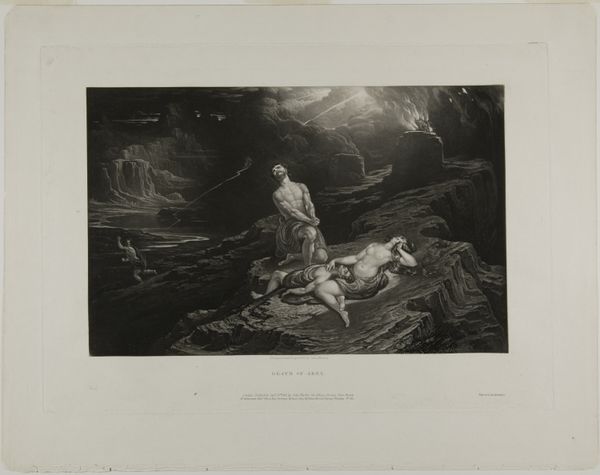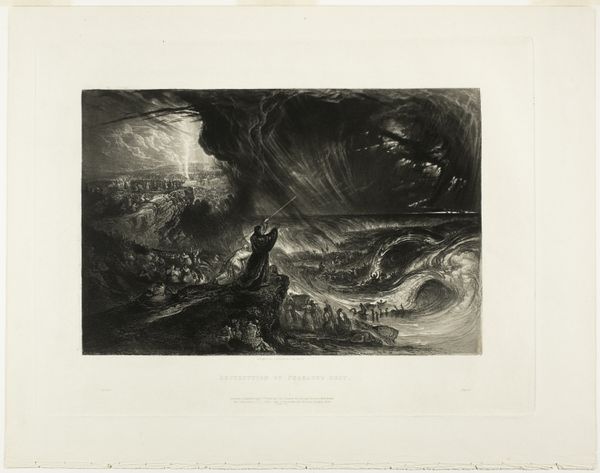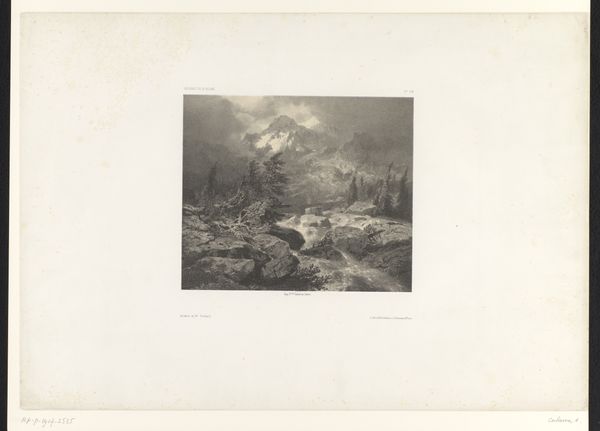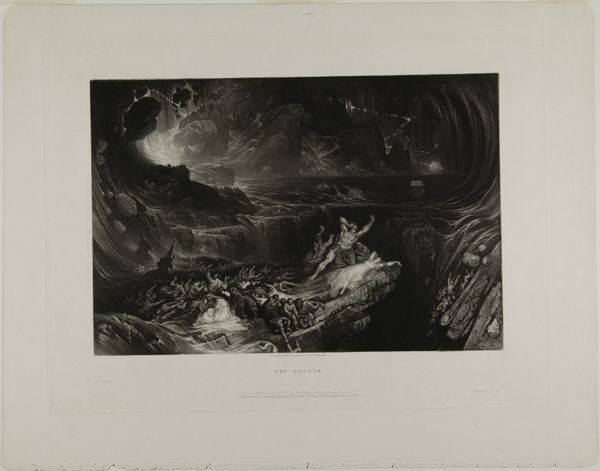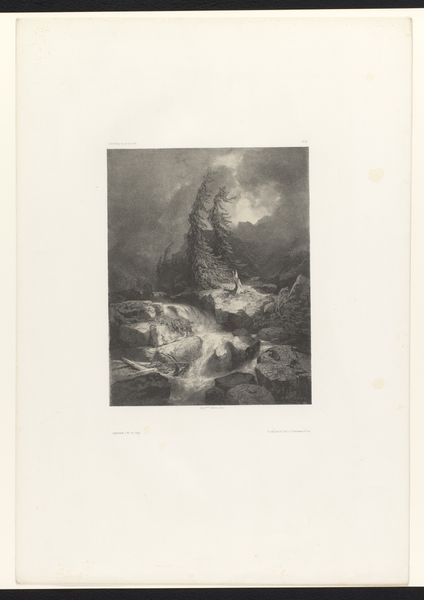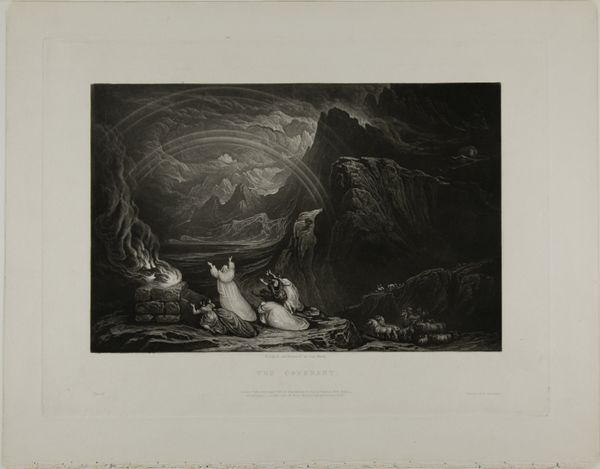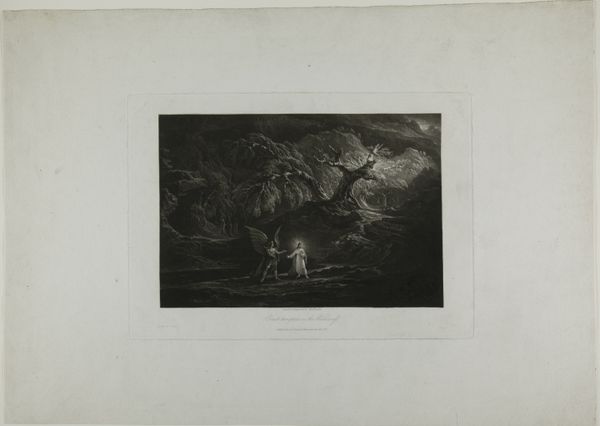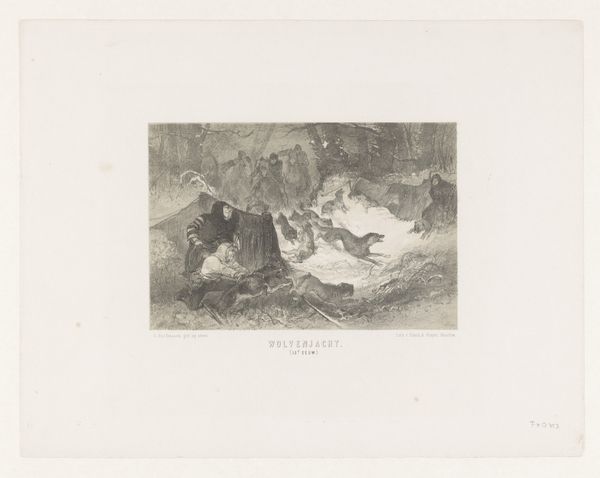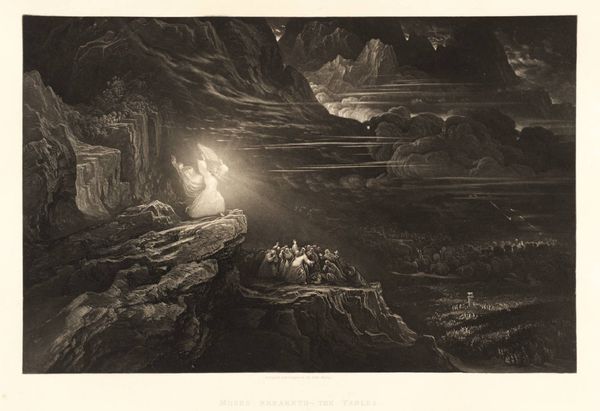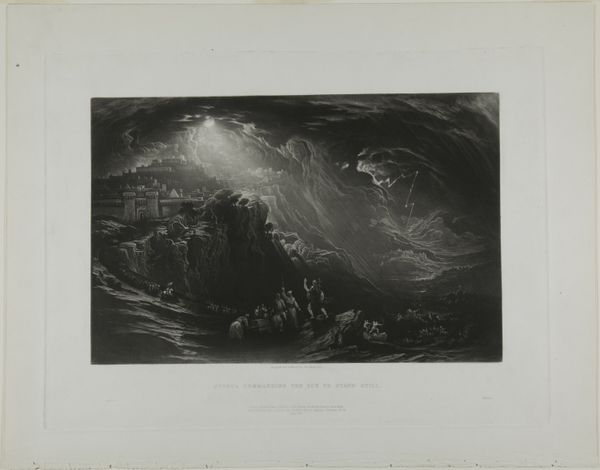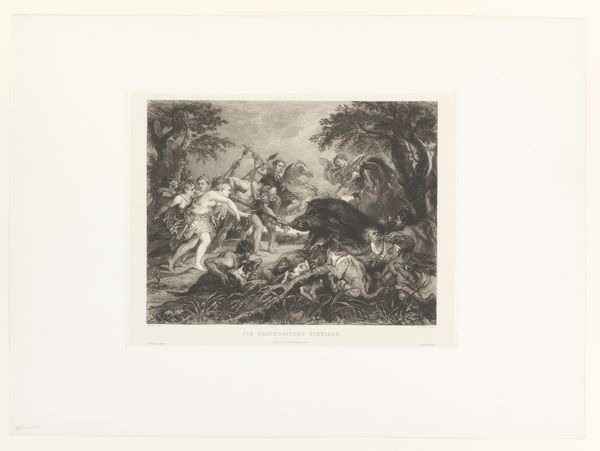
Moses Breaketh The Tables, from Illustrations of the Bible 1833 - 1834
0:00
0:00
drawing, print, etching, paper, engraving
#
drawing
# print
#
etching
#
landscape
#
paper
#
romanticism
#
history-painting
#
engraving
Dimensions: 190 × 290 mm (image); 268 × 357 mm (plate); 329 × 416 mm (sheet)
Copyright: Public Domain
Curator: Look at this powerful print. John Martin created "Moses Breaketh The Tables" sometime between 1833 and 1834. It's an etching and engraving on paper. What strikes you about it initially? Editor: Utter desolation! It feels overwhelmingly… dramatic. The high contrast, the almost theatrical landscape... it speaks of divine anger and a profound disruption. Curator: Indeed. Martin was a master of the sublime, and here, the landscape itself embodies the moral and societal chaos that ensues when laws are broken. Consider the socio-political context. This was a time of great upheaval and industrial change, mirroring a breaking down of established norms. Editor: I see it too in the stark division of light and shadow. Moses, bathed in light, stands in stark contrast to the darkness engulfing the people below. It reinforces his role as the conduit to the divine, the illumination of truth… perhaps truth that they’re not ready for. Curator: Exactly! The figure of Moses is crucial. How might we interpret the symbolic meaning of his action – breaking the tablets? Is it an act of anger, or does it signify the failure of language, of codified law, to restrain human fallibility? Editor: It resonates as an explosive moment – a shattering of expectations. Those shattered tablets signify a breakdown in communication and trust between the divine and humanity, triggering collective guilt that will have generational impact. And the mountainous terrain! It reinforces that sense of burden that the law can represent. Curator: It's not only about moral failure; Martin challenges us to question systems of power and their impact on society. By visually depicting this pivotal moment in religious history, Martin opens up broader reflections on moral codes, cultural anxieties and individual responsibility. How do systems fail and who bears the consequences? Editor: It does spark those kinds of thoughts. Considering how light and shadow play here, what are some symbols for "false idols" versus true beliefs or behavior? It would be interesting to trace how other artists throughout the Romantic era addressed these problems in society. Curator: Ultimately, this work is far more than a simple illustration. It is an invitation to grapple with foundational questions about ethics, societal structures and the very nature of belief in an age of rapid change. Editor: Yes, Martin gives form to inner conflicts, which speaks to the lasting relevance of stories about those figures like Moses and the eternal struggle to live well.
Comments
No comments
Be the first to comment and join the conversation on the ultimate creative platform.
